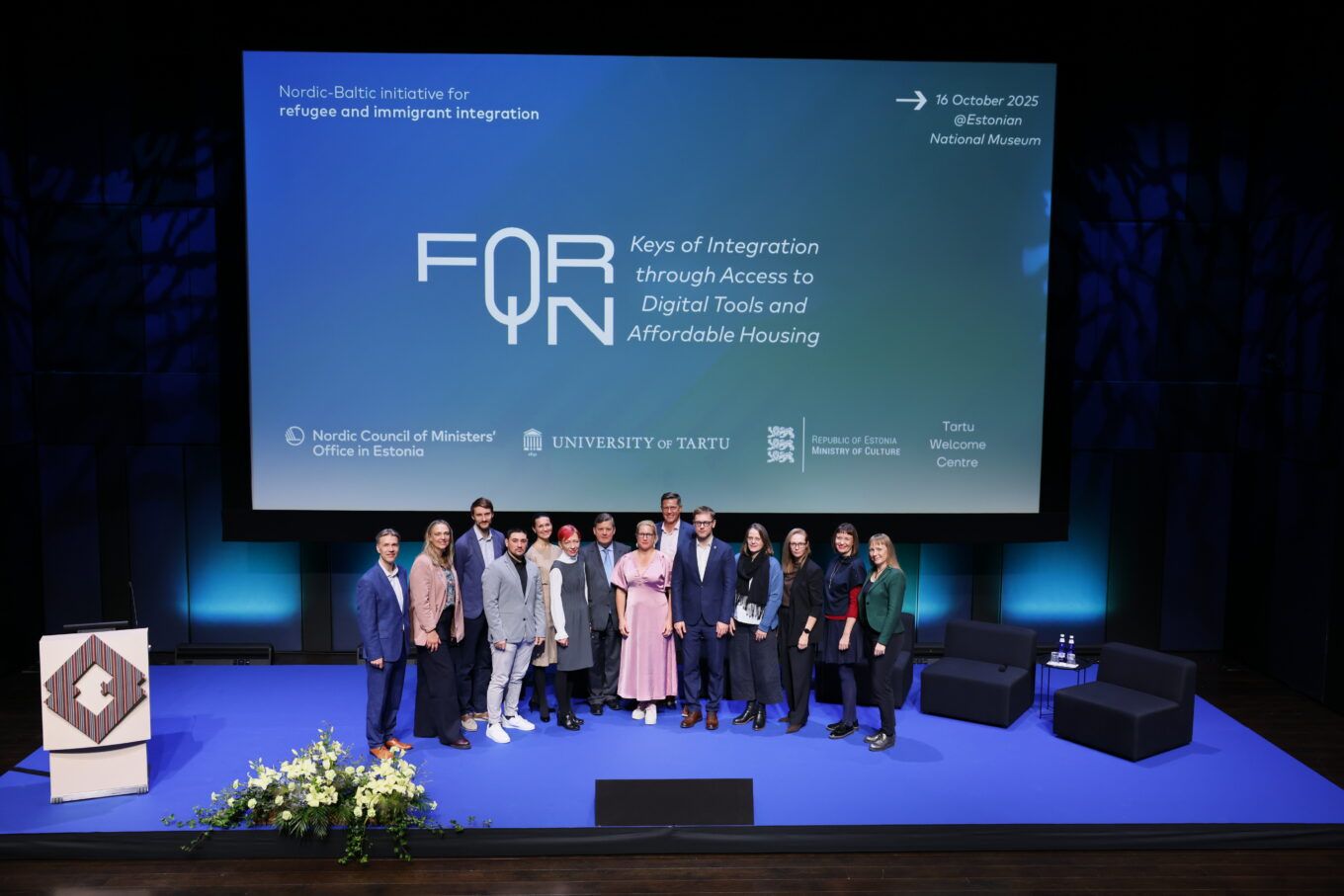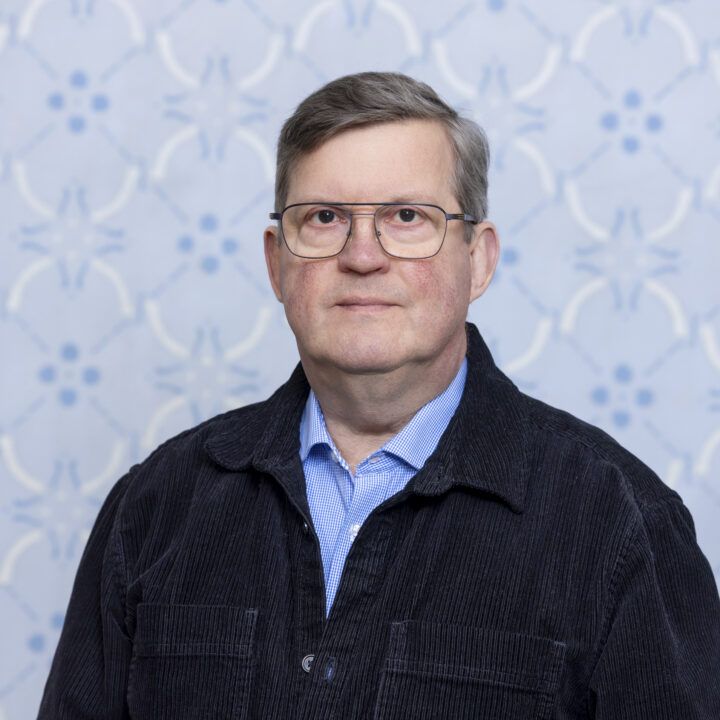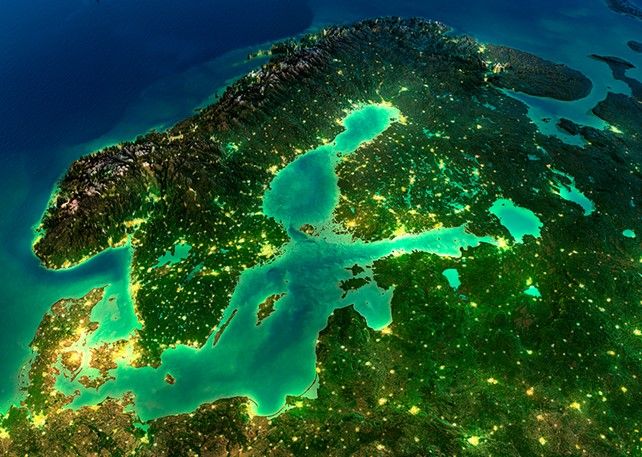FOR-IN 2.0 Migration Conference: Connecting People, Communities, and Digital Opportunities

Held on 16 October 2025 in Tartu, the FOR-IN 2.0 Migration Conference brought together experts from across the Nordic and Baltic countries to discuss how to build a more cohesive society – one where digital solutions support, but do not replace, human connection.
Dialogue as the Foundation of Integration
The conference was opened by Maria Gratschew, Director of the Nordic Council of Ministers’ Office in Estonia, who emphasized that digital tools are not merely technical aids but also bridges between people. “Digital tools connect us, as they transcend both sectors and target groups,” Gratschew said. “The goal is not to agree on everything, but to accept differing opinions.”
In a world increasingly divided by opposing values and worldviews, she noted that dialogue is more vital than ever – not for the sake of unanimity, but for mutual understanding.
Eda Silberg, Deputy Secretary General for Cultural Diversity at the Ministry of Culture, added that integration must function on three levels – state, local government, and community:
“Using digital tools in integration helps us move toward a clear goal – a cohesive society. But providing services alone is not enough, we must also offer safety and guidance.”
Mobility and Integration – Movement as Learning
The first keynote speech was delivered by Olle Järv, Visiting Professor at the University of Tartu and Associate Professor of Human Geography at the University of Helsinki. He described social mobility as one of the key ways to understand how people integrate into new environments.
“Our society is highly mobile. Mobility is a means of understanding how society functions,” Järv explained. He stressed that every movement – whether physical or digital – creates new knowledge and connections. Integration, he argued, should be seen not as a fixed endpoint but as a “continuous, never-ending process” that encompasses social, cultural, and identity dimensions. Public spaces and local knowledge create the foundation for genuine participation – integration happens where people meet.
Comparative Perspectives: Nordic and Baltic Experiences
The second keynote speaker, Henrik Emilsson, Associate Professor at Malmö University, pointed out that integration policies vary greatly depending on both target groups and social attitudes.
“When we talk about integration, we are talking about very different groups,” he noted, explaining that in Sweden the main migrant group consists of Syrians, while in the Baltic states it is primarily Russian-speaking residents.
Emilsson emphasized that integration does not happen automatically – it requires opportunities and spaces for contact: “Contacts between migrants and locals can only form if the opportunity for interaction exists.”
Shared activities such as sports, cultural projects, and community initiatives are, according to Emilsson, the most effective tools for fostering integration, as they create natural interaction and build trust.
Home and Community as the Foundation of Belonging
The conference’s first discussion block focused on the role of housing and community in the integration process.
Mari Arnover, Coordinator at the Association of Estonian Cities and Municipalities, emphasized that migrants’ needs are diverse and shaped by their background and life experiences. “The language barrier is a problem – people need to learn the language,” she said, adding that in addition to language training, access to healthcare, education, and employment is essential.
Camilla Bildsten shared the example of Norway’s Bærum municipality, where an “Introductory Programme” helps migrants adapt to local life and systems.
Vytautas Ežerskis, Project Manager at the International Organization for Migration in Lithuania, highlighted the central role of community support: “It takes a community to build a home.”
He stressed that for migrants, home and community mean much more than a physical place to live – they are sources of safety and belonging.
Digital Integration – Technology as a Partner, Not a Substitute
The second half of the conference focused on digital tools that support integration.
Kaisa Kepsu (Nordic Welfare Center) and Margarita Källo (Ministry of Culture) presented several Estonian initiatives, including Settle in Estonia, online language courses, and the Integration Roadmap. “As Estonia is a digital nation, integration cannot take place without digital solutions,” Källo emphasized.
Henrik Melin from Sweden’s Språkkraft introduced a media-based language learning platform that enables learners to study in their own language and at their own level – making language learning flexible and inclusive.
Latvian representative Jeļena Šaicāne showcased the national portal Latvija.lv, which provides access to over 1,600 services, including language learning opportunities. Monika Žitkė, Head of the Integration Department at Lithuania’s Reception and Integration Agency, emphasized the importance of balancing technology with human connection: “The integration process is not only administrative but also deeply personal.”
Žitkė noted that digital tools should complement existing services, not replace human interaction. She underlined that target groups must always be involved in the development process – only then can solutions be truly useful and user-friendly.
The Ecosystem of Integration
Discussions at FOR-IN 2.0 highlighted that integration is a social, cultural, and technological ecosystem, where success depends on cooperation across all levels of society. While digital infrastructure can bridge gaps in language and information, without human contact and community support it remains mechanical and impersonal.
Speakers repeatedly called for a balance between technological progress and the human dimension – digital tools can create opportunities, but true integration happens only when people feel heard, included, and at home.
Conclusion: Integration as a Shared Journey
The central message of the FOR-IN 2.0 Migration Conference was clear: integration is not an endpoint but an ongoing journey, where every movement, conversation, and collaboration is a step toward a more cohesive society.
Three key takeaways emerged:
- Community and home – a sense of belonging arises from relationships and security.
- Digital tools – amplifiers of access and participation.
- Open dialogue – acceptance of differences, not their erasure.
“People need person-to-person communication,” concluded the conference summary.
The digital world can support that communication – but only if we remember that integration always begins with the human being.
The article was written by Anni Tetsmann, Advisor at the Ministry of Culture of Estonia and Mari Laikre, Advisor at the Nordic Council of Ministers Office in Estonia.
Photo gallery of the event (photo credit: Egert Kamenik)
Video recording of the conference is available on our YouTube channel.
Further info:



